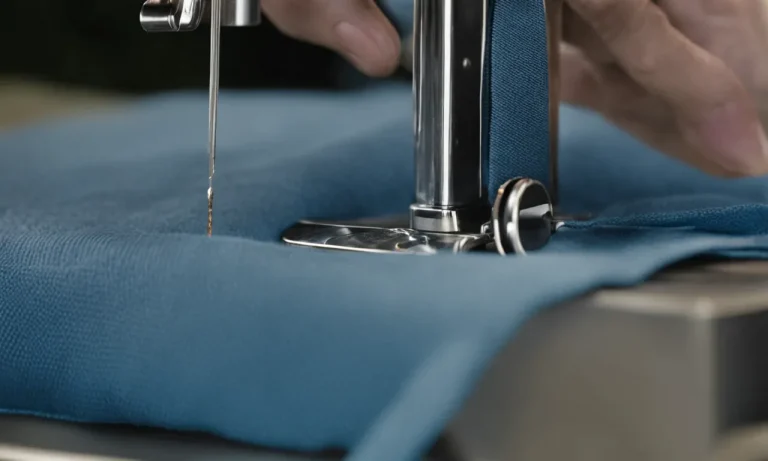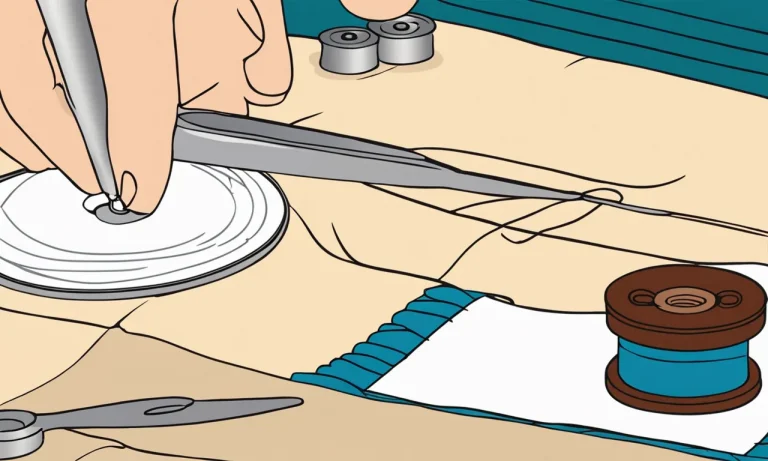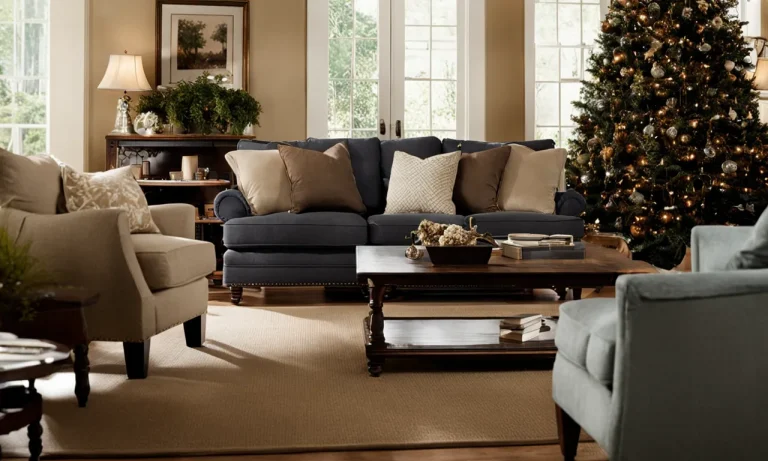How To Make Your Boots Tighter Around The Calf: A Complete Guide
If your boots are too loose around the calves, it can be uncomfortable and look sloppy. Luckily, there are some easy ways to make your boots fit tighter in that area without having to buy new ones.
If you’re short on time, here’s a quick answer to your question: Wear thick socks, use fashion tape, try on-calf boot bands, or see a cobbler about adding elastic panels or darts to the shaft.
In this comprehensive guide, we’ll discuss why you may want tighter fitting boots, how to assess if your boots are too loose, and provide step-by-step instructions for over 10 methods to make your boots tighter around the calves.
We’ll also offer tips on how to make the solutions last and when it’s better to just buy new boots. Read on for the complete rundown!
Why You May Want Your Boots to Fit More Snugly Around the Calves
Having boots that fit properly is essential for both comfort and style. When it comes to the calves, a snug fit can make a significant difference. Here are some reasons why you may want your boots to fit tighter around the calves:
Improve comfort
A snug fit around the calves can greatly improve the comfort of your boots. When the boots are too loose, your feet may slide around inside, causing discomfort and even blisters. By making your boots tighter around the calves, you can ensure a more secure and comfortable fit, allowing you to walk and stand with ease.
Enhance style and silhouette
Tightening your boots around the calves can also enhance your overall style and silhouette. A snug fit creates a sleek and polished look, especially when paired with skinny jeans or skirts. It helps to create a streamlined appearance and adds a touch of sophistication to your outfit.
Whether you’re going for a casual or dressy look, properly fitted boots can elevate your style game.
Prevent blisters
Loose boots can often lead to painful blisters, especially if your feet are constantly rubbing against the sides of the boots. By making your boots tighter around the calves, you can minimize friction and reduce the chances of developing blisters.
This is particularly important if you’ll be wearing your boots for long periods or engaging in activities that require a lot of walking.
Stop boots from falling down
One common problem with loose-fitting boots is that they tend to slide down the leg, which can be quite annoying. When your boots fit tighter around the calves, they are less likely to slip down while you’re walking or moving around.
This ensures that your boots stay in place, allowing you to enjoy your day without constantly adjusting them.
Remember, it’s important to find the right balance when making your boots tighter around the calves. You want them to be snug but not too tight that they restrict blood flow or cause discomfort. Take the time to adjust the fit properly to ensure both comfort and style.
For more information on how to make your boots fit tighter around the calves, you can visit www.bootmoodfoot.com for helpful tips and tricks.
Assessing If Your Boots Are Too Loose Around the Calves
Look for gaps or wrinkles
One way to determine if your boots are too loose around the calves is to look for gaps or wrinkles in the material. If there is excess space between the boot and your leg, you may notice wrinkles or folds in the fabric. This can indicate that the boots are not fitting snugly around your calves.
Boots slide down
If you find that your boots constantly slide down your legs while walking, it is a clear indication that they are too loose around the calves. This can be not only uncomfortable but also frustrating, as you may need to constantly readjust them to keep them in place.
A proper fit should ensure that the boots stay securely in position.
Heel slippage
Another sign of loose boots around the calves is heel slippage. If your heels are constantly lifting up and down inside the boots as you walk, it means that the calf area is not providing enough support and grip.
This can be both annoying and potentially hazardous, as it increases the risk of tripping or falling.
Calf area feels loose
If you can feel a noticeable gap between your calves and the boot material, it indicates that the boots are too loose around the calf area. This loose fit can make your boots feel less secure and may affect your overall comfort while wearing them.
Ideally, the boots should fit snugly around your calves without causing any discomfort.
If you experience any of the above signs, it is likely that your boots are too loose around the calves. It is important to address this issue to ensure a proper fit and maximize your comfort. Additionally, loose boots can lead to unnecessary wear and tear, reducing the lifespan of your favorite footwear.
Before making any adjustments, it is recommended to consult a professional cobbler or shoe repair specialist for their expertise and guidance. They can provide tailored solutions to make your boots tighter around the calves, such as using boot shapers, adding extra padding, or even altering the shaft of the boots if necessary.
Remember, a well-fitting pair of boots not only enhances your style but also provides the necessary support and comfort for your feet. So, don’t hesitate to take the necessary steps to make your boots fit perfectly around the calves!
Methods to Make Boots Tighter Around the Calves
Wear thick socks
One simple and effective method to make your boots tighter around the calves is to wear thick socks. Thick socks can add extra padding and bulk, which can help fill the empty space between your calves and the boots. This can create a snugger fit and make your boots feel more secure.
Additionally, wearing thick socks can also provide added comfort and warmth during colder months.
Use fashion tape
Fashion tape is a handy tool that can be used to temporarily tighten boots around the calves. Simply apply the tape to the inside of the boot shaft, where it comes in contact with your calves. The tape creates friction, preventing the boots from sliding down and keeping them securely in place.
Fashion tape is easy to remove and leaves no residue, making it a convenient solution.
Try on-calf boot bands
On-calf boot bands are elastic bands specifically designed to make boots tighter around the calves. These bands can be easily attached to the top of the boot shaft and pulled up to create a tighter fit. They are adjustable and can be customized to your desired level of tightness.
On-calf boot bands are a great option for those who want a quick and temporary solution.
Sew in elastic panels
If you are comfortable with sewing or know someone who is, sewing in elastic panels can be a more permanent solution to make your boots tighter around the calves. Elastic panels can be added to the sides or back of the boot shaft, allowing for additional stretch and a better fit.
This method requires some skill and time, but the results can be well worth it.
Add darts to the shaft
Adding darts to the boot shaft is another option for making boots tighter around the calves. Darts are small triangular fabric inserts that can be sewn into the boot shaft to create a more fitted shape. This method is best suited for leather or suede boots, as the material can be easily manipulated.
Adding darts allows for a customized fit and can significantly improve the comfort and appearance of your boots.
Apply Heat Shrink Tubing
Heat shrink tubing is a unique solution that can be used to make boots tighter around the calves. This method involves cutting a piece of heat shrink tubing and wrapping it around the top of the boot shaft. The tubing is then heated, causing it to shrink and create a tighter fit.
It is important to follow the manufacturer’s instructions when using heat shrink tubing to ensure safety and effectiveness.
Use Shoe Goo or Sugru
Shoe Goo and Sugru are adhesive products that can be used to make boots tighter around the calves. These products are applied to the inside of the boot shaft, creating a layer of sticky substance that helps grip your calves. Shoe Goo and Sugru are durable and can withstand regular wear and tear.
However, it is important to note that these products may alter the appearance of your boots, so it is recommended to test them on a small, inconspicuous area first.
Stuff the boots
If you have slightly loose boots, you can try stuffing them to make them tighter around the calves. This method involves placing materials such as foam inserts, rolled-up socks, or newspaper inside the boots to fill up empty space.
The extra padding can create a snugger fit and prevent the boots from sliding down. However, it is important to ensure that the stuffing does not cause discomfort or affect your walking ability.
Wear leg warmers
Wearing leg warmers is a stylish way to make your boots tighter around the calves. Leg warmers are designed to be worn over the boots, creating a layered look while also adding bulk. The added thickness can help fill the empty space between your calves and the boots, resulting in a snugger fit.
Leg warmers come in various colors and designs, allowing you to customize your look while improving the fit of your boots.
Add hooks and eyes
Adding hooks and eyes to your boots can provide a simple and adjustable solution for making them tighter around the calves. Hooks and eyes can be sewn onto the boot shaft, allowing you to adjust the tightness according to your preference.
This method is particularly useful for boots with a lace-up or tie-up design, as the hooks and eyes can be hidden behind the laces or ties.
Get shaft taken in by a cobbler
If none of the above methods provide the desired results, it may be worth considering getting the shaft of your boots taken in by a professional cobbler. A cobbler can alter the boot shaft by removing excess material or adding additional panels, ensuring a perfect fit around your calves.
While this option may be more expensive, it offers a long-term solution and can extend the lifespan of your boots.
Tips to Make the Solutions Last
When it comes to making your boots tighter around the calf, it’s important to not only find the right solutions but also ensure that they last. Here are some tips to help you make the most out of your efforts:
Break in the boots properly
Before applying any solutions, it’s crucial to properly break in your boots. This will not only make them more comfortable but also help the solutions adhere better. Wear your boots around the house or on short walks to gradually stretch them out.
Remember, Rome wasn’t built in a day, and neither should your boots be!
Apply solutions evenly on both boots
When applying any stretching or tightening solutions, be sure to do so evenly on both boots. This will ensure a consistent fit and prevent any imbalances. Follow the instructions provided with the solution and take your time to apply it carefully.
Remember that patience is key when it comes to achieving the perfect fit.
Reinforce seams and edges
One common reason for boots becoming loose around the calf is due to weak seams or edges. To make your solutions last longer, reinforce these areas with a shoe repair adhesive or by sewing them. This will help prevent any further stretching and maintain the tightness of your boots.
Periodically check for wear and re-apply
Over time, the effects of the solutions may wear off, especially if you wear your boots frequently. Therefore, it’s important to periodically check for any signs of wear and re-apply the solutions as needed.
This will help you maintain the desired tightness and prevent your boots from becoming loose again.
Remember, making your boots tighter around the calf is a process that requires time and effort. By following these tips and taking proper care of your boots, you can enjoy a snug and comfortable fit that lasts. So go ahead, put your best foot forward and strut confidently!
When to Buy New Boots Instead
While it’s possible to make your boots tighter around the calf, there are certain situations where it may be more practical to invest in a new pair of boots. Here are a few scenarios where buying new boots might be the better option:
Boots are the wrong size
If your boots are consistently uncomfortable, no matter how much you try to adjust them, it could be a sign that they are the wrong size for your feet. Wearing boots that are too small can lead to discomfort, blisters, and even foot problems in the long run.
It’s important to prioritize your comfort and invest in boots that fit you properly.
Shaft is damaged
If the shaft of your boots is damaged or worn out, no amount of tightening will be able to fix the issue. A damaged shaft can affect the overall fit and support of the boot, making it uncomfortable to wear. In this case, it’s best to consider purchasing a new pair of boots that are in good condition.
Calf is too wide for the boot’s shaft
Sometimes, the problem lies with the shape of your calf, rather than the boots themselves. If your calf is wider than the boot’s shaft allows, it can cause discomfort and restrict your movement. While there are certain methods to stretch the shaft slightly, if the difference is significant, it may be more practical to seek out boots specifically designed for wider calves.
Dislike the boot style
Lastly, if you simply don’t like the style of your boots, no amount of adjustments will change that. Personal preference plays a significant role in footwear, and if you’re not happy with how your boots look, it’s worth considering purchasing a new pair that better matches your style and preferences.
Remember, the goal is to find boots that not only fit well but also make you feel confident and comfortable. So, if you find yourself in any of these situations, it might be time to say goodbye to your current pair and start the search for a new one.
Conclusion
We hope this guide gave you plenty of options to make your boots fit tighter around the calves for a more comfortable and stylish look. The solutions range from quick DIY fixes like using sock inserts or fashion tape, to more advanced methods like adding elastic panels or taking them to a cobbler.
With a bit of trial and error, you should be able to find a technique that works for your specific boots and calves. Just remember to assess the boot material and construction to pick the best approach. Tighter boots await – go rock your new snug look!







